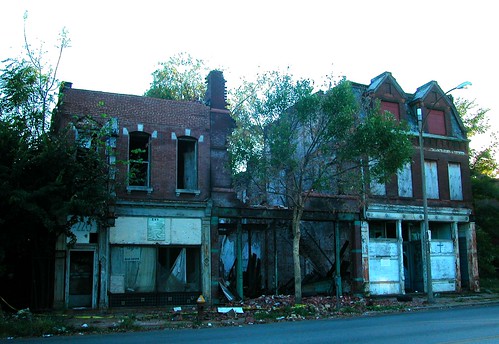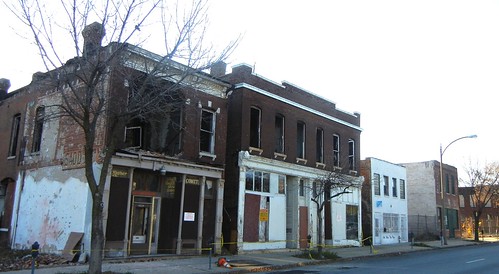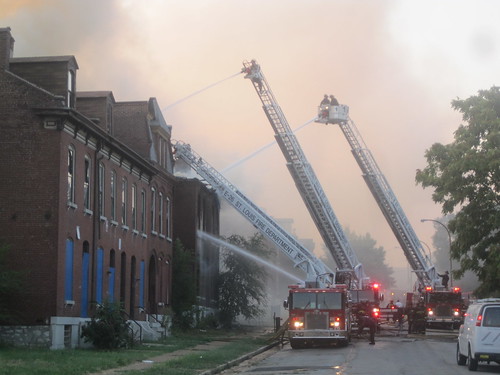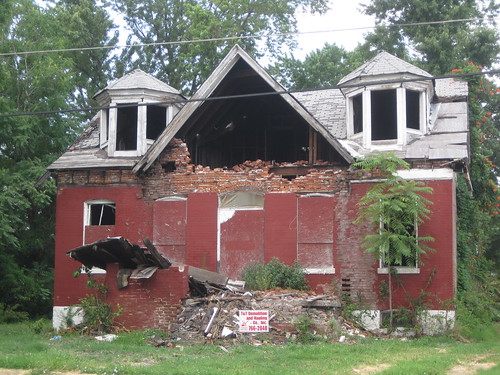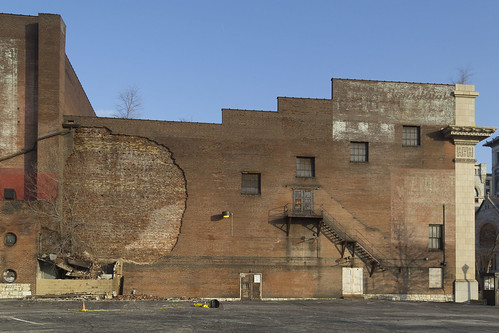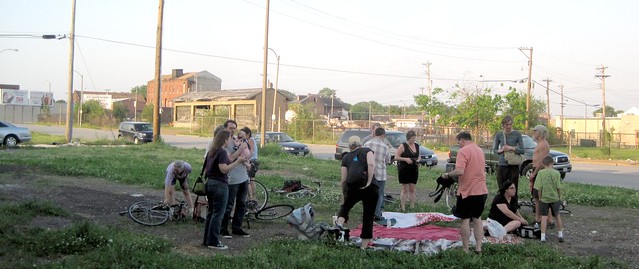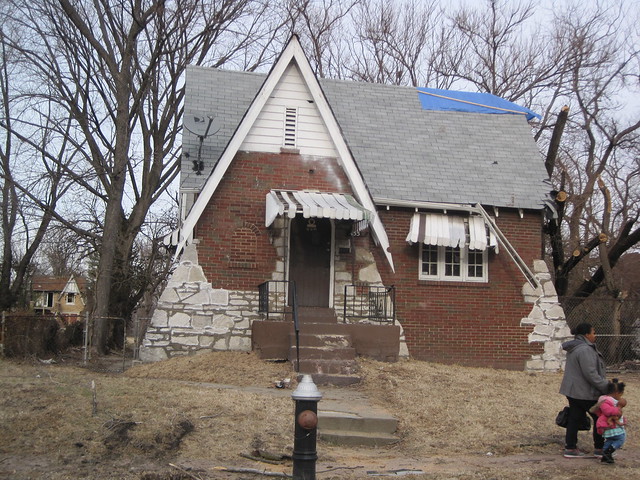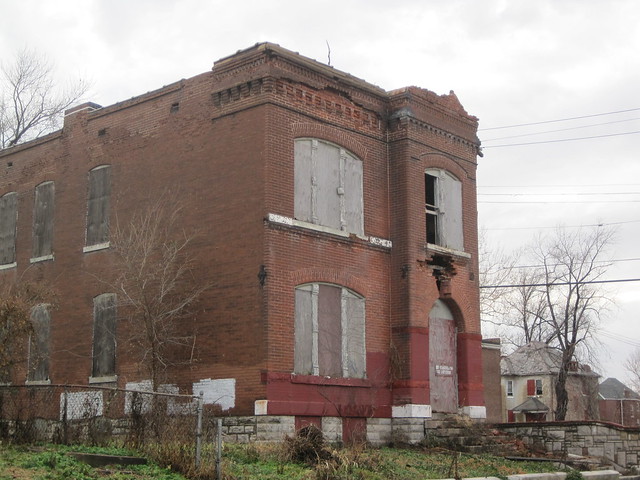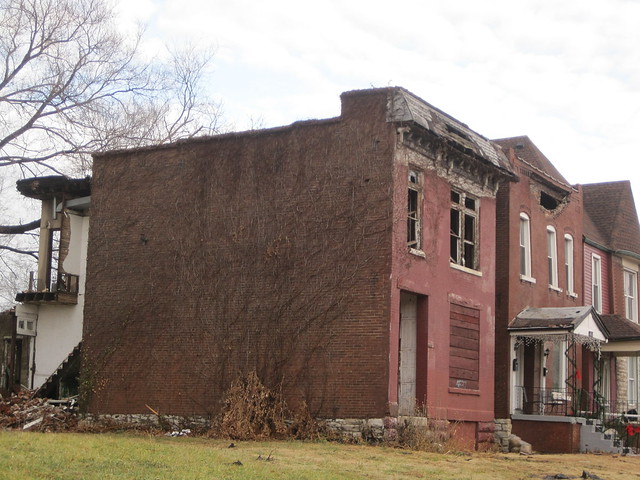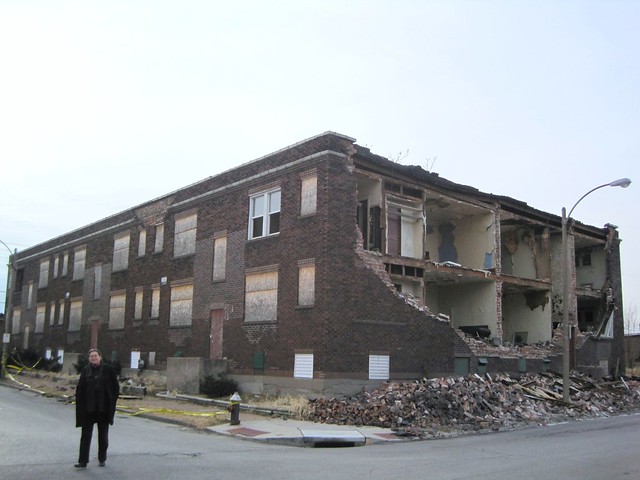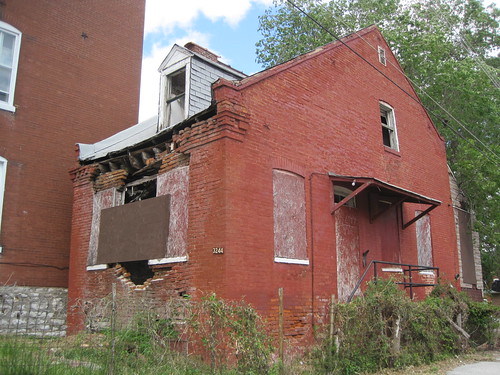by Michael R. Allen
Amid ongoing recession, development is continuing in the city’s Hyde Park neighborhood. Irving School LP, owned in part by Duffe Nuernberger, has started work on renovation of fifteen historic buildings scattered across the western side of the neighborhood between North Florissant Avenue, Natural Bridge Road and Glasgow Avenue. The projects utilize state and federal historic rehabilitation and low income housing tax credits.
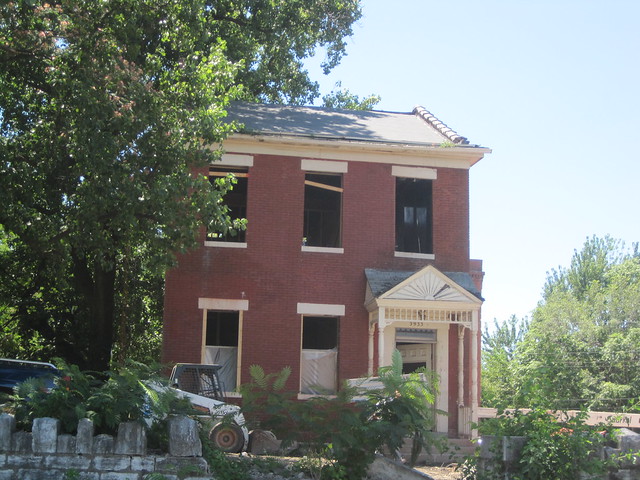
The elegant house at 3933 N. 25th Street is one block north of Irving School, rehabilitated by the same developers last year. Long vacant, the house retains a wooden porch with intact fretwork. The house is adjacent to an owner-occupied house.
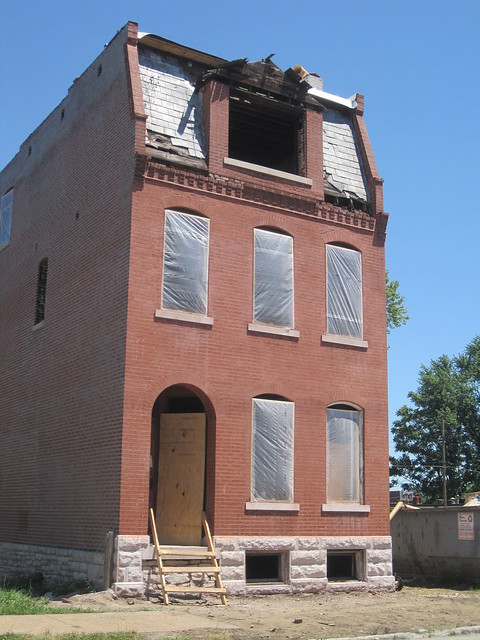
Here is the building at 3906 N. 23rd Street, two blocks east. The venerable two-flat is also a long-vacant building on a block that has lost much of its building stock. Eliot School LP purchased the house from the city’s Land Reutilization Authority.

The affiliated company, Irving School LP, recently completed six new houses on Farrar and 25th streets around Irving School. Above is a new house on N. 25th Street adjacent to existing buildings. While most of these new homes were built on vacant LRA-owned lots, one occupies the site of a historic building demolished by the developers.
The single-family homes offer a rent-to-own option, so the project is not exclusively creating tax-credit affordable rentals. Time will tell if a mix of ownership and rental is created here, but it is important that home ownership is included in the scattered-site development so that past affordable housing mistakes are avoided. Over-concentration of tax-credit rentals can lead to instability. (I do not take similar issue with rental housing in general, because existing market-rate rentals at all price points do not have the potential to unbalance a neighborhood housing economy.)
While I disagreed with last year’s demolition on Farrar Street, I am pleased that it took place in order to make way for a replacement building. That is not often the case in Hyde Park, and speaks to the sensitivity of the approach. The Irving School and Eliot School partnerships have worked with preservation architect Jeff Brambila, whose counsel is evident. Equally important is the fact that the developers are not using eminent domain or aggressively trying to buy out entire blocks. The approach here is slow and steady, and tackles vacant property without creating more of the same.
Potential Additional National Register Designations
Due to this development, Alderman Freeman Bosley (D-3rd) has appropriated funding to survey parts of the Hyde Park neighborhood excluded from the original certified local historic district‘s boundaries. In March, the Riverview-West Florissant Development Corporation issued a request for proposals for survey and any possible National Register of Historic Places nominations. Landmarks Association of St. Louis submitted the winning bid and will be conducting the work.
The areas to be surveyed are:
Area bounded by I-70 on the east, Angelrodt Street on the north, Branch Street on the west and Buchanan Street on the south.
Area bounded by Glasgow Avenue on the west/north, alley east of Vest Street on the east and Natural Bridge Avenue on the south.
Area bounded by Angelica Street on the south, Florissant Avenue on the east and Glasgow Avenue on the west/north.
The creation of such districts will allow developers to leverage tax credits programs for rehabilitation. Additionally, the designations could protect against demolition. While the Third Ward is a preservation review district, one of the arguments employed in favor of demolishing the house on Farrar Street was that it fell across the alley from the historic district boundaries.
